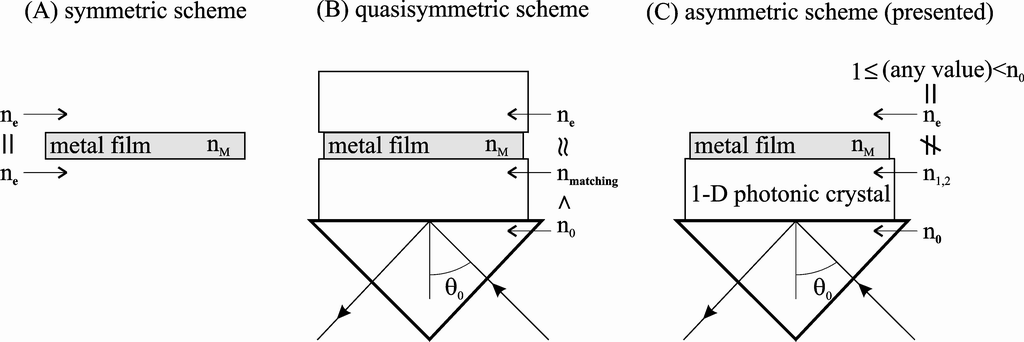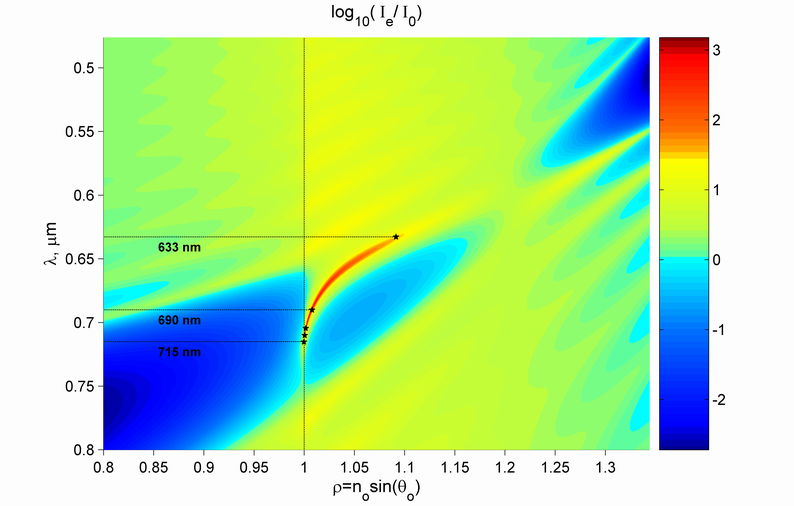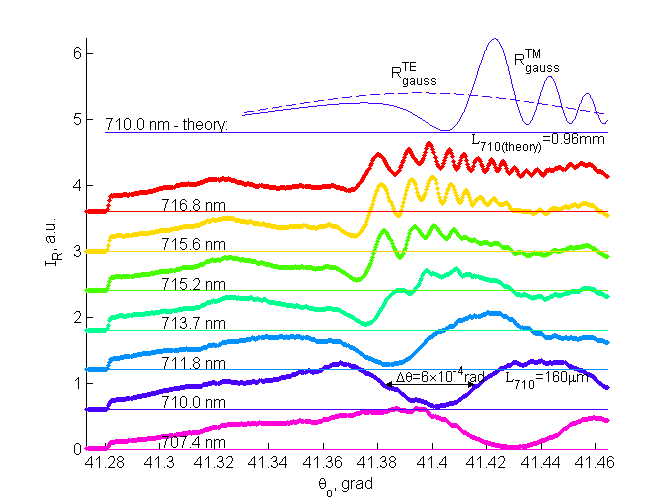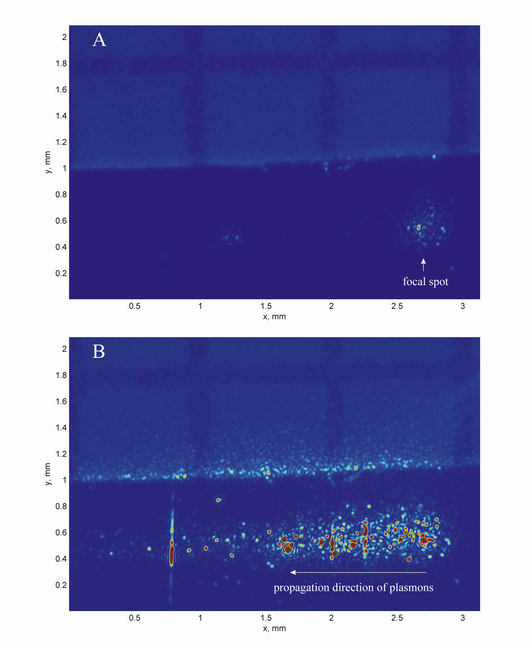
Abstract.
We present experimental results on ultralong-range surface plasmon polaritons, propagating in a thin
metal film on a one-dimensional (1D) photonic crystal surface over a distance of several millimeters. This
propagation length is about 2 orders of magnitude higher than the one in the ordinary Kretschmann
configuration at the same optical frequency. We show that a long-range surface plasmon polaritons
propagation may take place not only in a (quasi)symmetrical scheme, where a thin metal film is located
between two media with (approximately) the same refraction index, but also in a scheme where the thin
metal film is located between an appropriate 1D photonic crystal and an arbitrary (air, water, etc.)
medium. The ultralong-range surface plasmon polaritons are potentially important for biosensors,
plasmonics, and other applications.

Fig.1 Structures supporting long-range surface plasmon-polaritons propagation. (a) A symmetric scheme with identical dielectrics on both sides of the thin metal film. (b) A Kretschmann-like quasisymmetric scheme for LRSPP excitation by frustrated TIR on the prism. For the drawbacks of this scheme, refer to the text. (c) The presented scheme - a thin metal film on a 1-D photonic crystal. The external medium may have any RI in the range 1 < ne < n0, subject to an appropriate choice of 1-D photonic crystal structure.

Fig.2 The calculated dispersion of the test 1-D photonic crystal structure and measured experimental points (white pentagrams) at different wavelengths. The photonic band gap is clearly seen as blue areas with an enhancement much less than 1. The photonic band gap vanishes near Brewster's angle (rBr = 1.2 in this system), where no reflection of the TM wave takes place from the SiO2/Ta2O5 interface. The optical surface mode is seen as a red curve with an enhancement more than 100 inside the band gap. The black pentagrams are experimental points measured at l = 633 nm (He-Ne laser), l = 690 nm (diode laser) and l = 704.5 nm, l = 710.1 nm, l = 715.25 nm (Ti-sapphire laser).

Fig.3 Angular resonance curves at different wavelengths. Each curve is up-shifted by 0.6 a.u. from the previous one for good visibility. The diode array was shaded at q0 < 41.28 to mark the zero level. The interference near the plasmon resonance curves at l > 714 nm is a new distinguishing feature of ultra-long-range SPPs in the Kretschmann-like configuration (see text for details).

Fig.4 Photographs of the focused laser beam near the SPP resonance: (a) slightly off resonance and (b) in resonance. Plotting paper is placed near the laser focus on the film to designate the scale. The photographs were made from the external side of the film (from the upper side of Fig.1c). Ideally, no light must be seen from this side since total internal reflection of all light occurs. However, in actual practice, light is scattered on imperfections, which are always present on real surfaces, and this scattered light may be detected from the external side.
Return to home-page
- Основой стратегии, маленький фор, - любезно объяснила Кавилло, -
является не выбор какого-то одного пути к победе,
а создание таких условий, чтобы все пути вели к ней. В идеале.
Вашу смерть я использую одним способом, успех - другим.
(с)Лоис Макмастер Буджолд, "Игра форов"